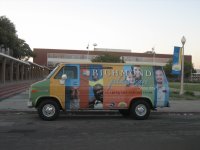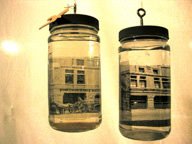Youth Summit - Ongoing Violence in Richmond

LAST SATURDAY TWO YOUNG KIDS WERE KILLED IN RICHMOND, a boy and a girl, two of five people shot that balmy summer night as I sat with friends a dozen blocks away, gathered to enjoy a barbeque and each others company while hearing a small army of sirens rush by.
Yesterday I attended the first annual Youth Summit at the East Bay Center for Performing Arts here in Richmond. It is a center that you can literally feel the energy coming out of the brickwork. A combination of panels, performances, and group discussions with subjects revolving around social justice and a commitment to excellence in the arts. There were invited guests including NY’s Global Action Project with a film on the prison industrial complex; Youth Speaks, a spoken word collaborative out of San Francisco, and a host of music, dance and art venues from the bay area. Kids with so much talent, optimism and hope about their futures – young stars in the making.
I left the youth summit at the end of the day and went to a park on the shoreline to watch a friend’s dogs get their daily run and to get some much needed air. At the park we heard gunshots and sirens and my friend, having lived so long in the city of Richmond, has this uncanny ability for figuring out exactly what neighborhood was involved and what kind of gun exchange had occurred. As we drove off and headed to avoid a train we ran into a helicopter landing area and witnessed the person who was shot being airlifted to the hospital. He was still alive after three gunshots to the neck. I had lost a very close friend in a drive-by last May in Boston and I melted down and cried for over an hour. Having co-directed an anti-violence program on the east coast for over 7 years now it all begins to add up, weighing you down and you have to struggle for those small reserves of strength that is all that keeps organizers going. I think the melt-down emanated from seeing all that “hope” at the summit that day and then witnessing the reality of where these kids live – what they are up against daily.
As I sit here Tuesday morning at 10:27AM the sirens are going off again.
By Shannon Flattery, Artistic Dir./Founder Touchable Stories
Photo Credit: Lolita Parker, Jr.
The following poem is by my husband Tim Mason.
Look into your own heart
Look deeper then into your soul
search the very bedrock of your being
ask yourself but one question.
Peer into your dark quarters
examine those things
about which you do not want to know
grapple with your demons and your doubts find that deep and holy place within from where all the warmth of your being emanates immerse yourself in the rhythms of breath allow them to inform your senses and know yes the question is answered know again that this profound knowing guides your step as you stand in the whirring, buzzing morass of contradiction and complexity that we all live each moment of our lives in.
Trust what you do not have words for
as you face your fears
one by one calling them into the light
meeting them, feet apart, arms by your sides, palms open.
Stand. As they glare at you and throw their punch.
Allow the blow to remind you that they too are real then not making a fist forgive your fear leave it free to find its own path on the planet wish it well in its journey
It is this way with Peace
both inner and outer
you retain your fragile control in a world out of your control you face your foe with open arms, when need be absorb the blow, and wish a place in heaven to wait patiently for your adversary as they enjoy a long and fruitful life.
Refuse to name an enemy.
Let your grudges walk away with your fears.
It is this way with Peace.
It can only be done completely.











